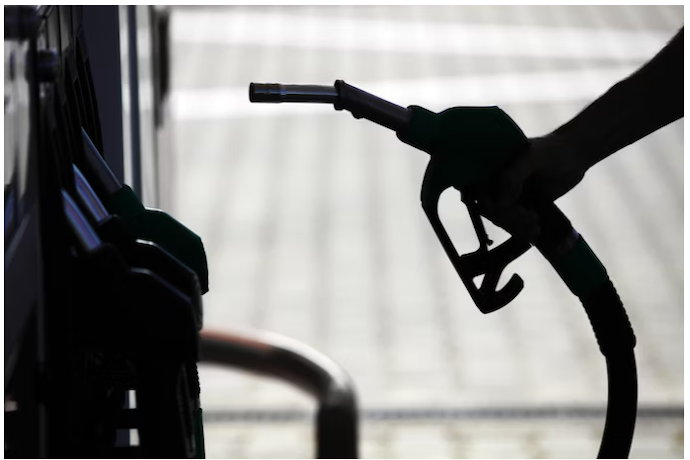How to Improve Your Fuel Tax Credit Claim
Fuel is essential for businesses that operate vehicles. Concretely, fuel costs represent a significant part of the total...
Read more
On average, fuel represents 15% of a company's total fleet operating budget (1). Given the impact that fuel can have on the bottom line, curbing costs is a priority amongst fleet managers, with 71% of fleet managers stating that fuel is one of the top challenges they face every day (2).
By providing specialised training, managers can help drivers learn how to reduce and work out fuel consumption and, in turn, fuel costs for the company. Find out some steps fleet managers can take to educate their drivers on improving fuel economy as well as how fleet management technology can help achieve a culture of fuel efficiency.
Educating your team about good driving habits can help to cut down on fuel consumption. By discussing responsible driving habits with your team of drivers, you can help them become more aware of how their driving impacts both fuel economy and their safety. Additionally, you can also take this opportunity to show how such habits can contribute to improved job security by making the company more profitable as well as the positive impact these habits have on the environment through reduced greenhouse gas emissions.
Here are a few points you can incorporate into your training session for drivers:
By keeping an eye on upcoming traffic conditions, drivers can anticipate having to slow down. It’s more efficient to keep a truck in constant motion than to accelerate from a complete stop. Staying in constant motion also reduces the number of gear changes needed. Checking for any hazards not only improves efficiency, it’s also important for safety reasons.
Driving at high speeds can have several negative consequences, including additional stress placed on the engine, speeding fines and an increased risk of accidents occurring. Speeding can also decrease the fuel economy of a vehicle.
According to IDAE, recommends avoiding speeding because it increases fuel consumption unnecessarily and can increase the risk of harsh braking and wear and tear of the vehicle. For example, an increase in speed by 20% (e.g. from 100 to 120 km/h) means a 44% increase in fuel consumption (from 8 l/100 km to 11.52 l/100 km). (3) According to the Department Industry, Science, Energy and Resources of the Australian Government, fuel efficient driving can help use 5 L per 100 km, cost $930 for fuel a year and emit around 1.5 tonnes of greenhouse gases a year. (4)
Idling vehicles can use up more fuel than you might think. The amount of fuel a vehicle consumes while idling varies depending on factors such as its weight, engine size and the type of fuel it uses. ‘Idling can use up to 2 litres of fuel per hour, emitting over 5.26kg of CO2’. (5)
Using an air conditioner while idling can drain fuel economy even more. It’s clear that costs can quickly add up, so be sure to consider whether you really need your engine running. If not, turn it off.
If a fuel tank is filled to the brim, it can easily overflow when the fuel is heated by the sun or by fuel returned from the engine. This is not only dangerous to others on the road, it’s also wasteful.
Make sure tires are kept at the correct pressure to help improve fuel economy and the life span of the tires. A reduction in the tire pressure can increase fuel consumption by 2% and reduce its service life by around 15%. This is why tire maintenance is vital to safer and more efficient driving. (6) Properly caring for your tires also helps to reduce the chance of an accident caused by a tire blowout.
If stopping to rest, it’s important to park trucks in a way that doesn’t require a lot of manoeuvring with a cold engine, as this can use up a lot of fuel. In addition, parking in the shade can help to cut down on the use of air conditioning systems during the summer.
Keeping your fleet vehicle at a constant speed is a simple way to improve fuel efficiency. When possible, use cruise control for highway driving.
It’s important to make sure air filters and spark plugs are replaced at the recommended intervals. Preventative maintenance can also help fleet managers to recognise potential issues with fuel injection and oxygen sensors.
In addition to implementing a driver training program, you can use fleet management technology to create a more fuel-efficient fleet.
As part of a fleetwide management system, managers can use these tips to reduce overall fuel usage and save thousands of Australian dollars. Not only does reducing fuel consumption boost profitability, it also helps increase efficiency and improve a company’s bottom line.
To learn more about how fleet management technology can positively impact fuel spending, download our Five Ways to Reduce Fuel Costs eBook and discover practical ways to lower fuel costs.
Tags: Cost Control




Find out how our platform gives you the visibility you need to get more done.
Fuel is essential for businesses that operate vehicles. Concretely, fuel costs represent a significant part of the total...
Read moreBusinesses want to use fuel as efficiently as possible. But how do you reduce fuel consumption if vehicles are using too...
Read moreFuel Tax Credits (FTC) provides big and small businesses with a credit for the fuel tax (excise or customs duty) that's...
Read moreThere are some serious implications of engine idling when it comes to fuel efficiency. Excessive motor vehicle idling...
Read more